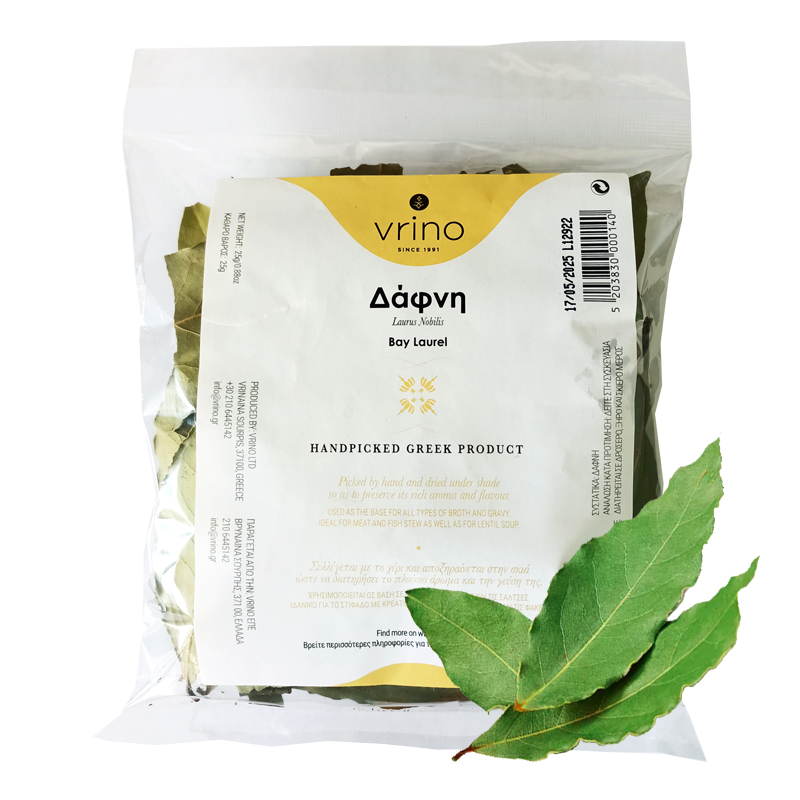Description
Dry Laurel: the plant, the legend, the use in kitchen
The laurel or laurel, in Latin “laurus”, is an evergreen plant that grows in the areas of the Mediterranean Sea. It is often used as an ornamental plant during the Christmas periods or for graduation wreaths, but dry laurel it is also excellent to use in the kitchen, often in combination with Oregano and Thyme.
The leaves of this plant can be plucked all year round and it is not difficult to recognize them: they have an elongated shape and a hard, leathery appearance. They can be used both fresh and dried, depending on your tastes and needs: fresh they have a stronger flavour.
The laurel has very ancient origins: even the Latin poet Ovid talks about it in his “Metamorphoses”. Not just literature, however: the laurel is also present in art, with Bernini’s myth of Daphne and Apollo exhibited at Villa Borghese as a statue and present in everyone’s mind as a myth. In the myth, the god of music and poetry falls in love with the nymph Daphne, who does not reciprocate and runs away from him. Shortly before being reached, the nymph asks for help from Mother Earth who, to save her, transforms her into a Laurel plant. From that moment, this evergreen became a sacred plant to Apollo, god of poetry, and this is why its leaves adorned the heads of Greek and Latin writers and artists, becoming a symbol of culture and knowledge.
From a nutritional point of view, laurel leaves are a source of vitamin C which is an ally of the immune system, of folic acid which is important for the development of the nervous system during gestation, of vitamin A with antioxidant properties and of group B vitamins which are important for good functioning of the metabolism. Among the minerals, laurel provides potassium, an ally of the heart, calcium, phosphorus and magnesium useful for the health of bones and teeth and iron and copper required for the production of red blood cells.
Barbastel imports and distributes Vrino spices in Poland.




